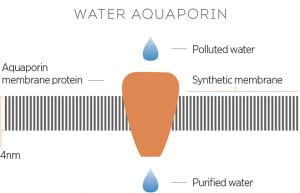You will likely agree with me when I say that Singapore’s Water Story is one of Singapore’s proudest product. With our 4 National Taps, we have secured a sustainable and continuous supply of a limited resource. Incorporating these Taps, the water loop was developed to save and reuse every drop of water from every possible source[1].
Each element in this loop is constantly developing to ensure a more resilient water supply. The upcoming Tuas Nexus[2] will contain a water reclamation facility which can treat the equivalent of 320 Olympic-sized pools of wastewater every day. Our water catchment area is projected to cover 90% of our land by 2060[3,4], thus collecting more rainwater that falls on our land.
We are probably most familiar with three out of four of our National Taps (NEWater, Local Catchment and Imported Water) due to the amount of publicity they get and the public accessibility to these areas. Reservoirs are free for people to visit and enjoy water activities in, and topics about NEWater and our imported water are in every Primary School’s Social Studies syllabus. Hence, what I want to talk about today is about desalination.
By the end of 2020, Singapore will have 5 desalination plants to increase the water supply from the sea[5]. Surrounded by sea, it makes sense for Singapore to make use of it to produce potable water. However, desalination is extremely energy-intensive, using about 3.5kWh of energy per cubic meter of seawater. That’s more than the energy used to power your air-conditioner every hour! Hence, the PUB’s goal is to reduce the energy consumption of desalination to 1kWh/m3 in the long run. One interesting method is biomimicry, which is a concept we usually see in nature.

Diagrammatic representation of an aquaporin protein (Credit: The New Economy)
In this case, the natural biological process of extracting freshwater from saltwater is mimicked by using aquaporins to filter water through a membrane. Aquaporins are transmembrane proteins that selectively transport water molecules across the cell membrane. In mangrove trees, aquaporins can filter 90-95% of saltwater at its roots[6]. Aquaporins are also present human kidneys to purify water.
Though still under intensive research, novel aquaporin membranes[6] have shown to be able to filter water faster and use low pressures and energy. This suggests that the future energy consumption of desalination plants may be reduced by a significant amount. The membrane can also reduce costs by about 30%, which is great for both the industry and consumers.
Our water demand expected to double by 2060. While reducing water consumption is key, we cannot live without water. Hence it is also important for us to find energy-efficient ways to obtain clean water for use. Perhaps, learning from nature to develop technologies is a good way forward.
ps: In fact, biomimicry is not a new concept. It has also been used to improve the efficiency of solar PVs. Check out this article[7]!
SDG6: Clean Water and Sanitation
References
[1] PUB. (2020, May 28). Singapore Water Story. https://www.pub.gov.sg/watersupply/singaporewaterstory
[2] PUB & NEA. (2020, September 8). Tuas Nexus – Singapore’s First Integrated Water and Solid Waste Treatment Facility Begins Construction. National Environment Agency. https://www.nea.gov.sg/media/news/news/index/tuas-nexus-singapore-s-first-integrated-water-and-solid-waste-treatment-facility-begins-construction
[3] MSE. (2020a, September 2). Waterways. https://www.mse.gov.sg/topic/waterways
[4] MSE. (2020b, September 2). Reservoirs. https://www.mse.gov.sg/topic/reservoirs
[5] PUB. (2020a, May 8). Desalinated Water. https://www.pub.gov.sg/watersupply/fournationaltaps/desalinatedwater
[6] NUS. (2015, December 9). NUS researchers develop highly efficient nature-inspired membrane that can potentially lower cost of water purification by 30 per cent [Press release]. https://news.nus.edu.sg/press-releases/nus-researchers-develop-highly-efficient-nature-inspired-membrane-can-potentially
[7] Siddique, R. H., Donie, Y. J., Gomard, G., Yalamanchili, S., Merdzhanova, T., Lemmer, U., & Hölscher, H. (2017). Bioinspired phase-separated disordered nanostructures for thin photovoltaic absorbers. Science Advances, 3(10), e1700232. https://doi.org/10.1126/sciadv.1700232

Hi Ernest!
It’s really interesting to look into the ideas behind desalination. You’ve mentioned that aquaporins in mangrove tree roots can purify 90-95% of saltwater. Why do you think we are building a technology that mimics the aquaporins, instead of growing more mangrove trees in Singapore to purify our water?
– Jo
Hi Jo, thanks for stopping by my blog!
The idea behind this technology is so that we can manufacture it on a large-scale to desalinate water for our use, whether is it for industrial usage or to be put back into our reservoirs for future consumption. While growing more mangroves around our coasts can serve to bring back some ecological services and restore coastal mangrove ecosystems, the purified water in mangroves will be used by the mangroves themselves for their biological processes, and it isn’t a good idea to cut them down to obtain the purified water. Hence such a technology is developed so that we can continue to ensure a resilient water supply while reducing the energy consumption associated with desalination.
Perhaps I don’t quite fully understand your question, and maybe you were referring to the purification of water for other purposes, but in any case, I hope I clarified some things! Do let me know if I did not so I can better address them. Thanks!